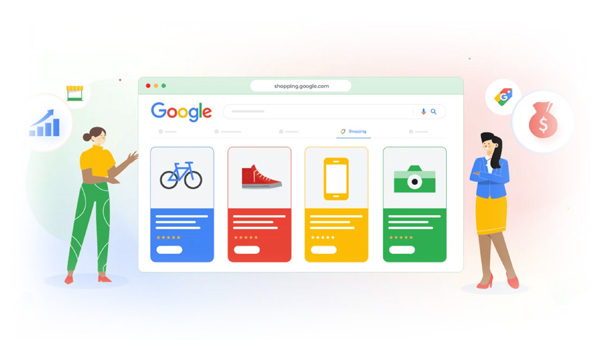Google Shopping has taken a significant step in transforming how consumers search for and purchase products online. Harnessing the power of artificial intelligence (AI), the platform has undergone a complete overhaul, introducing new features designed to simplify deal-hunting, identify competitive prices, and personalize the user experience. These updates arrive at a strategic time, just ahead of Black Friday, a peak period for global retail activity.
Although the new features have a scheduled launch date in the United States, there is no confirmation yet regarding their rollout in Brazil. Nevertheless, these innovations highlight the future of digital shopping.

The update is the result of an integrated effort between Gemini, Google’s advanced AI, and the Shopping Graph, a robust database containing detailed information on 45 billion product listings. This technological synergy has enabled Google to implement significant changes that optimize the shopping process and elevate personalization standards.
1. Personalized Home Page
The Google Shopping homepage has been completely redesigned to cater to each user’s interests and shopping behaviors. The main page now showcases products and videos based on browsing and search history, offering a more intuitive and relevant experience.
2. AI-Generated Summaries
When conducting a search, consumers receive an automated briefing with essential information about the desired products. For example, searching for a running shirt generates a summary including technical details, materials, available sizes, average prices, and customer reviews, along with links to various retailers.
3. Dynamic Filters and Search Refinement
The new search experience allows users to refine their queries using dynamic filters tailored to personal preferences. These filters can include criteria such as price range, color, size, availability, and reviews. This customization level reduces the time spent finding exactly what the consumer is looking for.
4. Augmented Reality (AR) and Virtual Try-Ons
One of the most innovative features is the ability to virtually try products. Using augmented reality and generative AI technologies, consumers can see how items like clothing and accessories would look before purchasing. This functionality minimizes buyer’s remorse and boosts purchasing confidence.
With the new Offers tab, Google Shopping becomes an indispensable tool for deal-seekers. This section highlights discounted products, clearly categorized for easier navigation during high-traffic shopping periods like Black Friday.
Additional Features:
- Price Tracking: Users can monitor price fluctuations for specific products and receive notifications about price drops.
- Advanced Comparison: Similar products are displayed side-by-side with detailed information, enabling a more informed decision-making process.
- Search Continuity: If a consumer interrupts their search, they can resume it days or even weeks later from the exact point they left off.
Although Google Shopping uses AI to personalize the experience, the company prioritizes user control and privacy. Consumers who prefer not to have personalized results can disable the feature, avoiding the tracking of personal information.
Additionally, pages using AI are labeled as experimental, ensuring transparency about the functionality. This allows users to understand that, while innovative, the system may undergo adjustments. Google also encourages feedback to refine the platform over time.
For now, the updates will launch exclusively in the United States in the coming weeks. The expansion to other markets, such as Brazil, remains without a set timeline, but expectations are high due to the growing importance of digital platforms in Brazilian retail.
With these updates, Google Shopping not only aligns with global e-commerce trends but also positions itself as a leader in innovation. The integration of artificial intelligence, machine learning, and augmented reality redefines what consumers can expect from an online shopping platform.
Especially during events like Black Friday, the updates provide speed, convenience, and smarter ways to save. For Brazilian consumers, the anticipation builds as they await the local implementation of this transformative technology, which promises to revolutionize online shopping in the near future.
Conclusion
The Google Shopping update, powered by artificial intelligence and cutting-edge technologies like augmented reality, represents a significant leap forward in online shopping. With features such as AI-generated summaries, dynamic filters, virtual try-ons, and a personalized interface, the platform aims to make product searches faster, more precise, and engaging.
While these innovations are currently available only to U.S. users, there is hope that Brazil and other markets will soon benefit from these advanced tools. The transparency in AI usage and customizable results ensure greater control and security for consumers, reflecting a commitment to privacy.
In an increasingly digital and dynamic shopping landscape, Google Shopping positions itself as a solution that not only streamlines the purchasing journey but also redefines how consumers interact with brands, making the process more efficient, transparent, and personalized.

